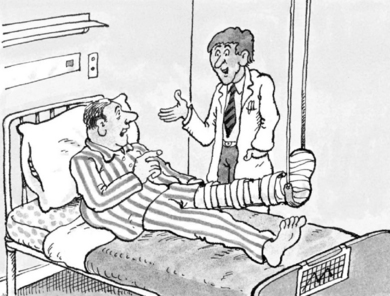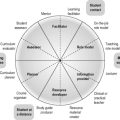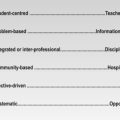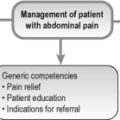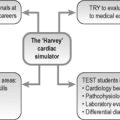24 Teaching and learning in the clinical context
Changing perceptions of clinical teaching
the education and the quality of the training varied with the trainer’s capacity and conscientiousness. For these reasons, as described earlier in the book, in the early part of the twentieth century training was moved to medical schools and associated with a defined curriculum. A greater emphasis was put on the scientific basis for medicine and this played a key role in the early training of a doctor and lectures were widely adopted. In the past two decades there has been a move to return an emphasis in training to the clinical context, with the provision of authentic learning experiences from the early years of the undergraduate curriculum. Changes have also taken place in postgraduate education with the recognition that the education of the trainee does not need to conflict with his or her service role in the delivery of health care. With an appropriate curriculum and planning, learning can be managed ’on the job’ in the context of the trainee’s work.
The importance of clinical teaching
The advantages of clinical training are obvious:
• If it is implemented appropriately, students are motivated by the relevance of the learning. Students enter medicine to become doctors, and learning with patients and from patients is a powerful and effective learning experience.
• Learning round a patient helps to convey a holistic approach to medical care that combines the necessary knowledge, skills and attitudes.
The teacher
The role of the clinical teacher is particularly challenging as it encompasses the range of roles highlighted in Chapter 1. These include information provider, role model, facilitator, mentor, assessor and planner. Clinical teachers assume multiple roles when they interact with their students. They need to be ’the expert’ and a source of knowledge while at the same time facilitating the students’ learning by having an understanding about the teaching and learning process. Both senior and junior doctors serve as role models for students. Many studies have explored the attributes of a good clinical teacher and these are summarised in Table 24.1.
| Good clinical teacher | Bad clinical teacher |
|---|---|
| Plans the clinical teaching with clearly defined learning outcomes | Haphazard approach with no clear plan |
| Appears enthusiastic with a positive attitude | Disinterested and regards the teaching as an intrusion into other commitments |
| Serves as a positive role model demonstrating good relationships with patients | Serves as a poor role model lacking aspects of professionalism in practice |
| Helpful and available to students | Intimidating and teaches by humiliation |
| Encourages student active participation | Didactic with student’s role passive |
| Patient-orientated with problem solving | Disease-orientated and factual |
| Observes student examining patient and provides feedback | Listens to or reads students’ reports of examination of patient and provides inadequate feedback |
| Provides students with opportunity to practise their skills | Does not encourage students to practise their skills |
| Tailors the teaching to the stage of training of the students and to the needs of the individual students | Does not take into consideration the stage of training of the students or their individual needs |
The patient
Clinical teaching is unique as the key element is the patient. The patient may be a hospital in-patient or out-patient or may be located in the community. In addition to learning with ’real patients’, students can benefit from exposure to simulations including simulated patients, manikins and computer representations as described in Chapter 25. These tools can complement but not replace experience with real patients. Patients locate the teaching in the real world, provide more authentic learning experiences and help to ensure that the teaching is relevant. Patients as well as the teacher can provide feedback to the student about their techniques, attitude and communication skills.
Implementing
• Arousing the learner’s interest, e.g. ’How often do you think a general practitioner will see a patient with a thyroid problem?’
• Testing the learner’s knowledge of the subject, e.g. ’Is this a reliable indicator that the patient is hyperthyroid?’
• Promoting the student’s understanding and encouraging the student to reflect on the topic and stimulate their critical thinking, e.g. ’Which of the treatment options available would you advise in this case and for what reason?’
• Encouraging the learner to relate theory to practice: ’What is the explanation for the patient’s tachycardia?’
• Inviting comparisons or different viewpoints, e.g. ’What is different in this patient from the last patient we saw?’
• Consolidating the learning through encouraging the trainee to review and summarise the learning that has occurred, e.g. ’What have you learned today from the experience?’
In clinical teaching the provision of feedback to the learner is of particular importance. Feedback is an essential part of the learning process. It provides students and trainees with information about their performance and how they can improve upon it. It needs to be given skilfully if you want to motivate your students. The feedback should be timely, descriptive rather than evaluative, and specific rather than general. Try to provide positive suggestions and not just negative comments. This is discussed further in Chapter 2.
Clinical supervision
• finding out the aspirations and career intentions of the trainee
• recognising the strengths and weaknesses of the trainee and adapting the training to the trainee’s needs
• meeting regularly with the trainee to discuss the expected learning outcomes
• monitoring the trainee’s progress and giving frequent and constructive feedback
• encouraging the trainee to be reflective by keeping a diary or portfolio of the clinical cases encountered
• being available to the trainee when support or advice is required
• offering counselling to the trainee if the need arises
• keeping the trainee motivated by being positive yourself
• keeping their personal knowledge base and practice up-to-date.
Reflect and react
1. Think about how you can ensure that your students or trainees achieve the expected learning outcomes when so much of their clinical experience is opportunistic.
2. Is sufficient care taken to inform and obtain consent from patients who participate in the clinical teaching and are they asked for feedback?
3. Do you adequately monitor the progress of students or trainees for whom you are responsible and provide them with frequent and constructive feedback?
Dolmans D.H.J.M., Wolfhagen I.H.A.P., Essed G.G.M., et al. The impacts of supervision, patient mix, and numbers of students on the effectiveness of clinical rotations. Acad. Med.. 2002;77:332-335.
The effectiveness of clinical rotations depends on high quality student supervision.
Dornan T., Littlewoods S., Margolis S.A., et al. How Can Experience in Clinical and Community Settings Contribute to Early Medical Education? A BEME Systematic Review. BEME Guide No. 6. Dundee: AMEE, 2007.
Evidence as to the value of clinical experiences early in the curriculum.
Ramani S., Leinster S. Teaching in the clinical environment. AMEE Guide 34. Med. Teach.. 2008;30:347-364.
An overview of clinical teaching with practical guidelines.
Spencer J. Learning and teaching in the clinical environment. In Cantillon P., Wood D., editors: ABC of Learning and Teaching in Medicine, second ed, Chichester: John Wiley and Sons, 2010. (Chapter 8).
A short overview of clinical teaching.
Sutkin G., Wagner E., Harris I., et al. What makes a good clinical teacher in medicine? A review of the literature. Acad. Med.. 2008;83:452-466.
A description of what is known about the attributes of a good clinical teacher.

